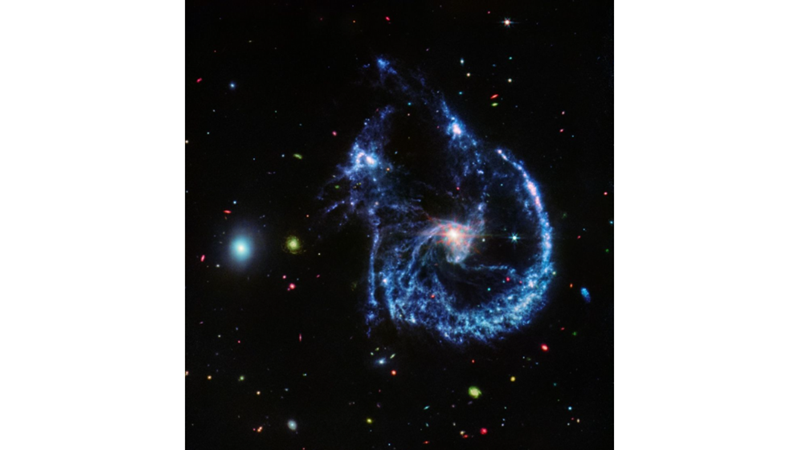In this image, two galaxies, one elliptical (left) and one spiral (right), reveal a remarkable detail: the supermassive black hole at the centre of the large spiral galaxy. The black hole swallows the gas and dust in its neighbourhood, causing these materials to become extremely hot and releasing huge amounts of energy. This process causes the galaxy's core to glow brightly. The black hole also shows @NASAWebb-specific diffraction spikes caused by the interaction of the emitted light with the telescope's structure.
The Webb Telescope analysed this pair of galaxies, called Arp 107, with two different instruments: MIRI (Mid Infrared Instrument) and NIRCam (Near Infrared Camera). Each observes different wavelengths of light, providing unique information about the structure of Arp 107. This image was recorded by MIRI.
Image description:
A pair of interacting galaxies. The larger of the two galaxies lies slightly to the right of the centre and consists of a bright, white centre and a ring of blue, gaseous filaments. The centre of this galaxy shows Webb's eight-fork diffraction pattern. There are three filaments of gas and dust moving from the ring towards the centre. There is a noticeable gap in the upper left of the ring, bounded by two large, blue pockets of dust and gas. The smaller galaxy is made up of hazy, light blue gas and dust. There are many red, green, blue and yellow galaxies, some with a hazier composition, while others have more distinct spiral patterns.
Credits: NASA, ESA, CSA, STScI


 Nielawore
Nielawore









Yorumlar
Nice
lovely
Yorum yazmak için lütfen giriş yapınız